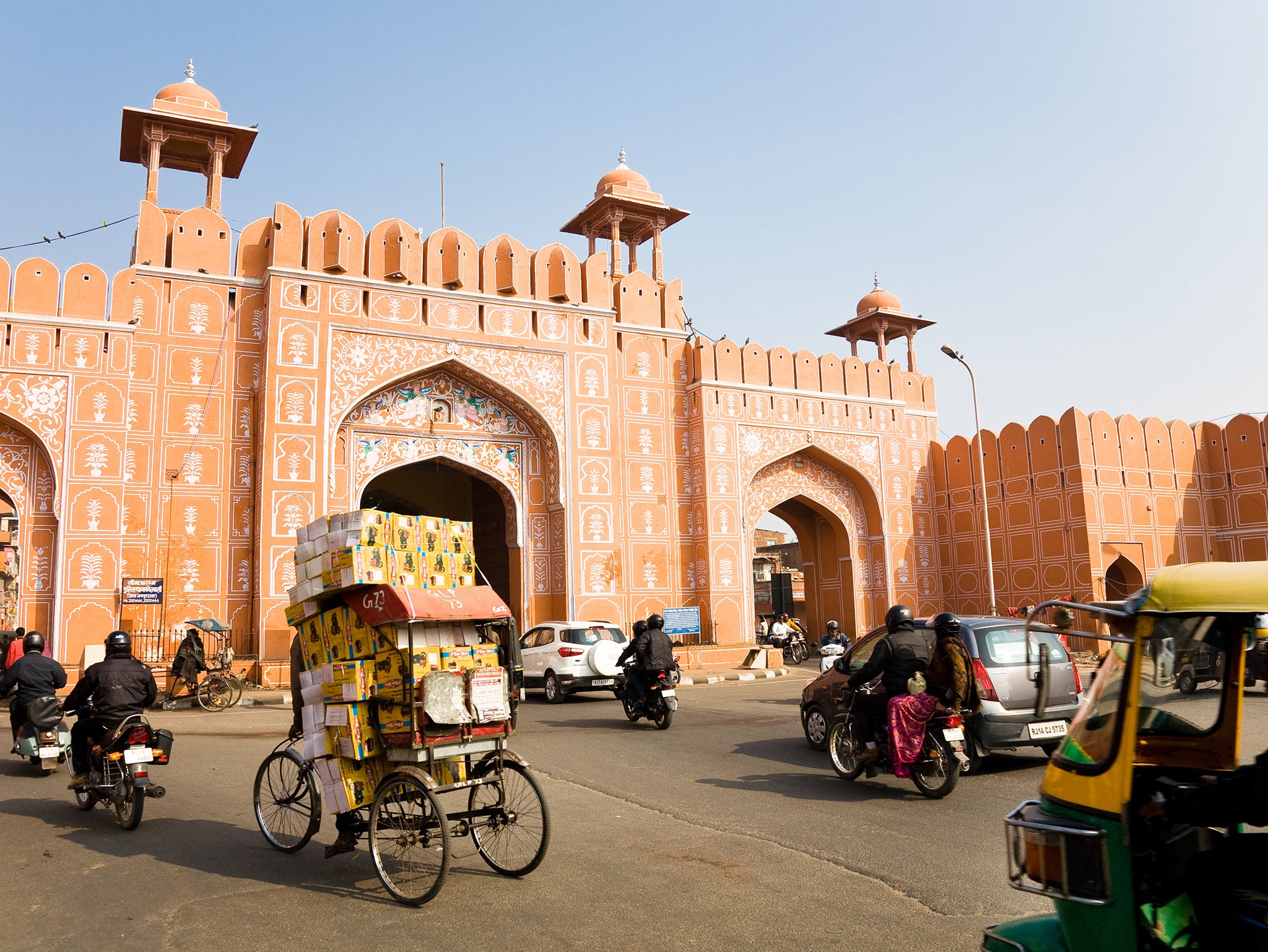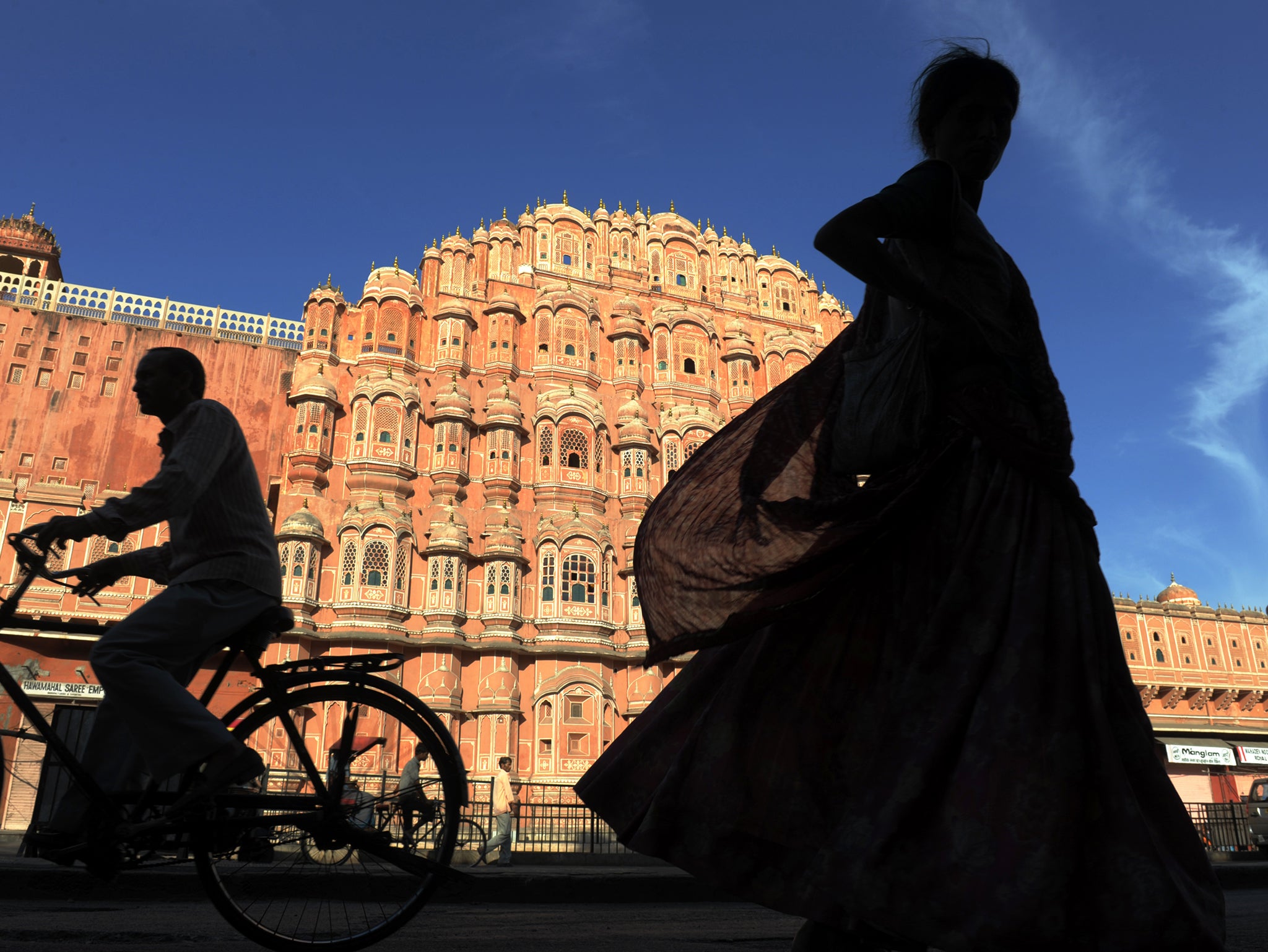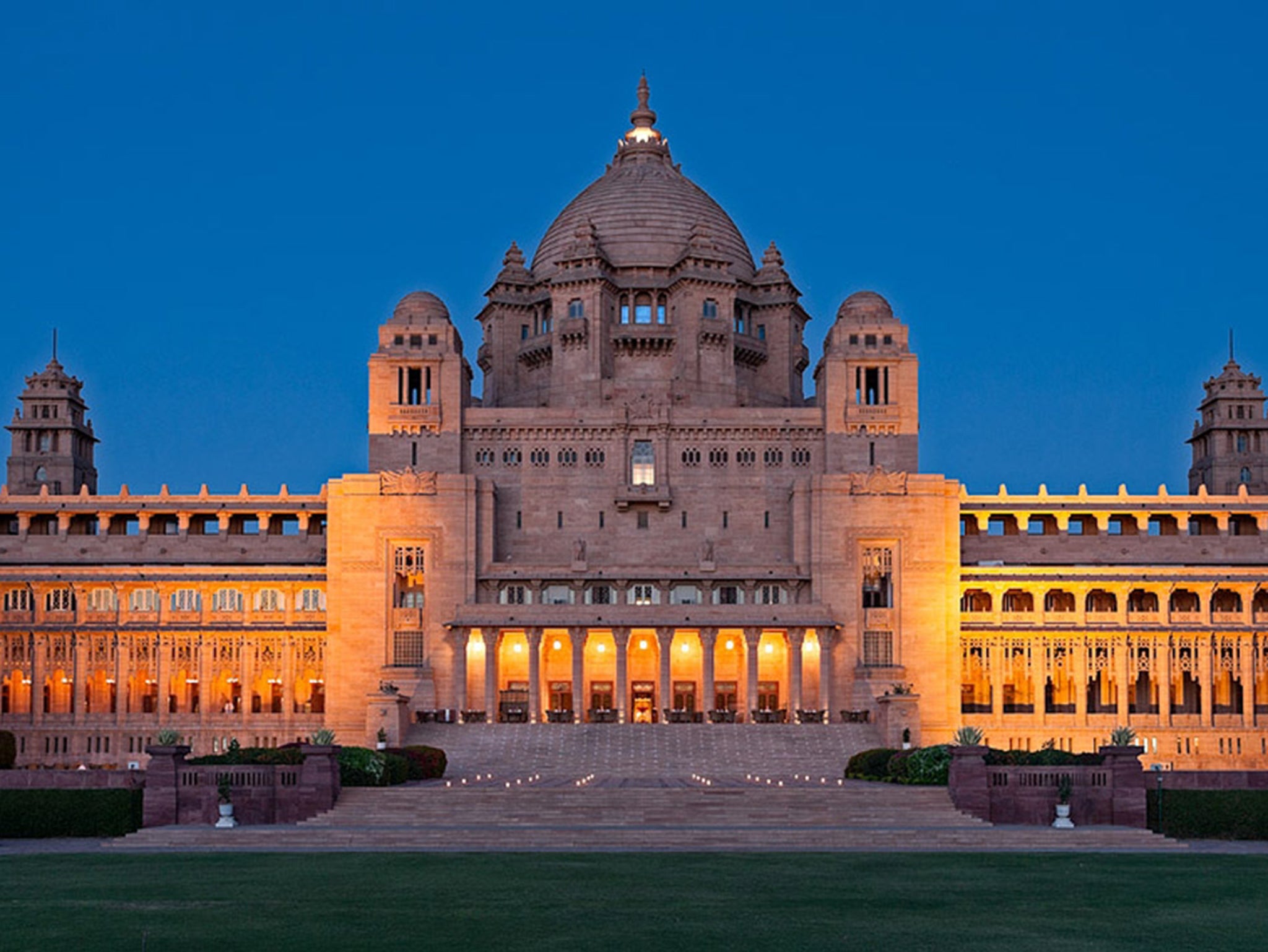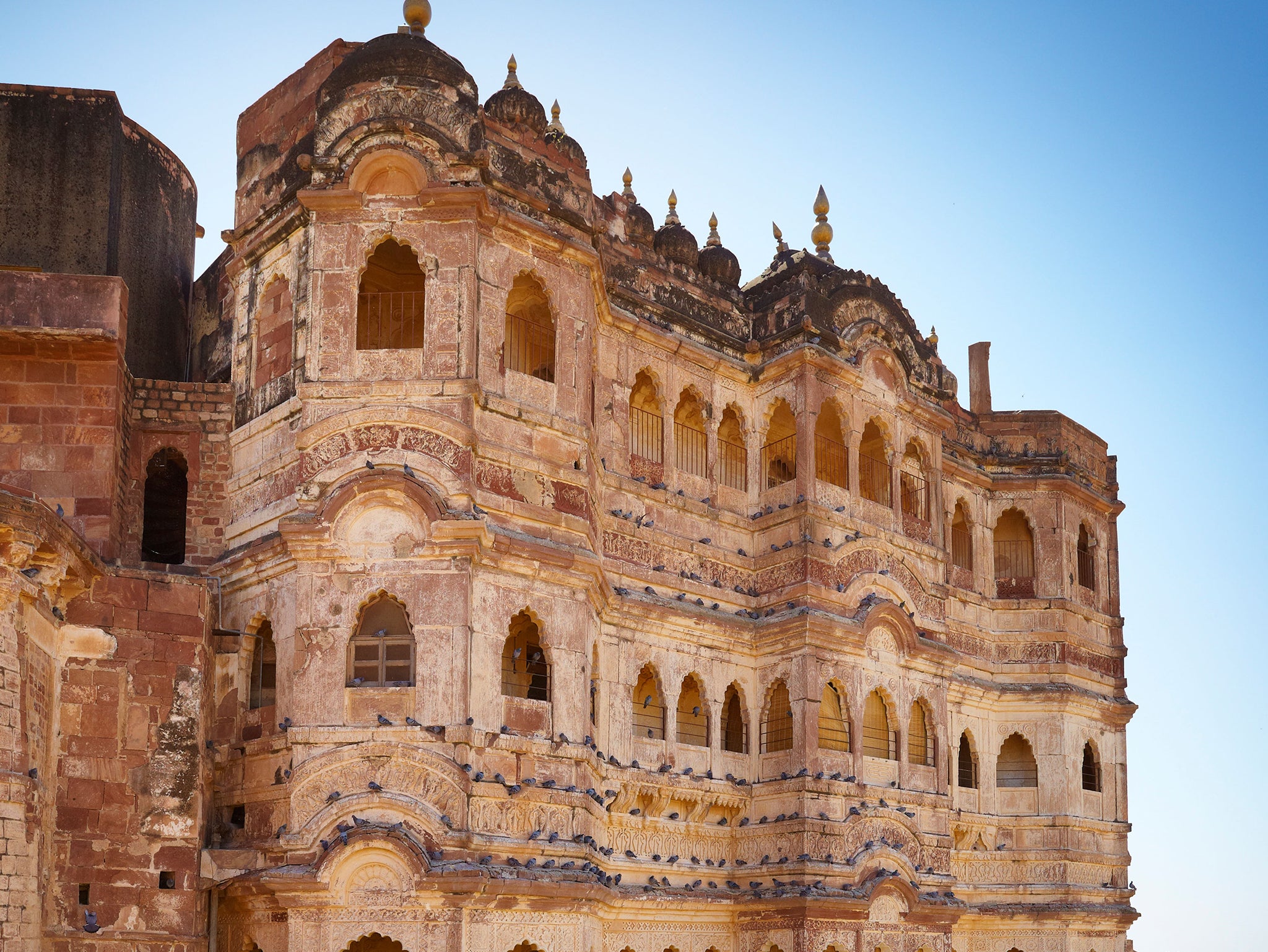Road Raj: New Indian e-visa makes a Rajasthan adventure easier
Exploring a national obsession with cars

Your support helps us to tell the story
From reproductive rights to climate change to Big Tech, The Independent is on the ground when the story is developing. Whether it's investigating the financials of Elon Musk's pro-Trump PAC or producing our latest documentary, 'The A Word', which shines a light on the American women fighting for reproductive rights, we know how important it is to parse out the facts from the messaging.
At such a critical moment in US history, we need reporters on the ground. Your donation allows us to keep sending journalists to speak to both sides of the story.
The Independent is trusted by Americans across the entire political spectrum. And unlike many other quality news outlets, we choose not to lock Americans out of our reporting and analysis with paywalls. We believe quality journalism should be available to everyone, paid for by those who can afford it.
Your support makes all the difference.In the heart of New Delhi, at the confusingly named Jaipur Polo Grounds, 80 gleaming vintage cars sit in regal splendour across the greensward, each cordoned off by a red rope. They’re not your run-of-the-mill Rollers and Daimlers. Many are the mile-long glory chariots of the 1920s and 1930s, venerable forms of coachwork – sedanca coupés and landaulettes, boat-tail tourers and dual-cowl speedsters – from companies you’re never heard of: Lanchester, Minerva, Moon.
They perch on the grass like sphinxes, their vast headlamps like unseeing eyes, oblivious to the tumult around them. Many look as if they were built for the sole purpose of having someone important in the back seat, waving to crowds. But what are they doing here? They’re all Indian-owned, and they’re being shown off. For this is the 2015 Concours d’Elegance, the world’s top vintage-car beauty contest sponsored by Cartier under the banner “Travel in Style”. An idea pioneered in Pebble Beach, California, in 1950, but which has taken off in India like a Porsche Carrera down a ravine.
Indians, it turns out, are vintage-car nuts – not just as collectors, but as devoted restorers and resurrectionists. The more venerable cars are known colloquially as Maharaja-mobiles, and the former kings of Indian states compete, in a friendly way, for the top prizes. Last year, the Maharaja of Jodhpur won the Best in Show prize for his jade-green 1935 Rolls Phantom II. This year, his 1941 Cadillac Limousine, with blacked-out rear windows so it could be used while keeping to the rules of purdah, is displayed near the Maharaja of Udaipur’s big orange 1934 Steward Touring Caravan.

“They’re a window to the past,” the Maharaja of Jodhpur told me. “These cars have a fascinating history. Some of them have moved on from the families they once belonged to, but the people who acquired them are interested in the history as well as the cars.” So, did the maharajas compete to own the finest Rollers and Jaguars? “Oh yes – the cars hopped from family to family. People swapped or even gave them away. The late Maharaja of Jaipur ... came to see us in Jodhpur once. When he left, he drove off in a car that wasn’t his. When reminded that a car was missing, he didn’t send back the original, he sent the Phantom II.”
Enthusiasts of more modest means can claim prizes too. The winner of this year’s Mark Shand Award is a Mr Ashok Naidu, who impressed judges by riding his father’s 1952 CZ-Jawa motorbike 200,000 miles around India, and halfway up Mount Everest.
This year’s judges are also a pretty vintage collection. Among the luminaries in the VIP marquee are Prince Michael of Kent; Professor Gordon Murray, the legendary Formula One designer; Giacomo Agostini, the handsome Italian winner of 15 World Championship motorcycle races; Simon le Bon, lead singer of Duran Duran, and his wife Yasmin, a lifelong would-be racing driver.
The judges are allotted classes of car to assess: and when they’ve finished their inspections they meet the owners who display photographic records of the car’s long journey from dilapidation to restoration. “Admirable,” says Prince Michael gruffly. The owner beams.

It’s a remarkable phenomenon, the Concours basks in a shared history, when the British Raj ran the joint but the maharajas still had princely power. That power was lost when India became a democracy, and when Mrs Gandhi later expropriated their wealth in the early 1970s and cancelled the Privy Purse that allowed them an income.
It seemed only natural, after the Concours, to take a trip through Rajasthan, seeing where the maharajas lived. You can go by train to the three key cities of Jaipur, Jodhpur and Udaipur – but we decided to go by car. How to describe motoring through Rajasthan? The journeys are eye-opening, with sense-jolting experiences, and nothing prepares you for the traffic, the noise, the poverty, the roadside grot and sudden livestock irruptions.
You drive on the left, but there’s no guarantee that cars, bicycles, trucks and the odd camel won’t be heading towards you on the hard shoulder. Herds of huge-horned cattle amble against the traffic and there’s always a truck hogging the central lane, its tailgate garishly painted and often bearing twin messages “horn please” and “use dippers at night”. Families of four or five pass by, squashed on to a single motorcycle. Ladies often ride side-saddle to maintain their decency.
Suddenly you’re out of the howling chaos and in a relatively calm, well-ordered grid system, whose high walls are either of a cool ochre or bruised-raspberry hue. This is the Pink City, the old quarter of Jaipur, built in the 1720s by Maharaja Jai Singh II along Hindu lines that express harmony and mysticism. An enlightened chap, he introduced hospitals, paved some roads and fostered trade, but his main obsession was astrology. The Jantar Mantar observatory is like nothing you’ve ever seen – a slightly mad series of 18 massive plaster sculptures designed by the Maharaja – giant working sundials or devices for measuring the Sun’s distance from Earth. Nearby, in the City Palace, you can gawp at the display of spiked and evisceratory weapons used to defend the city; the textile museum that features several outsize shirts and skirts worn by the elephantine Maharaja Madho Singh, and the gorgeous, stained-glass-lit Durbar room where the king held court.

The ideal place to stay is the Rambagh Palace, Jaipur’s jewel, built in 1835 as a hunting lodge and expanded in 1925. It’s a beautiful custard-yellow hotel, with courtyards and parterres laid out across 47 acres of gardens across which peacocks strut and fountains play at dusk as you sip your cocktails on the veranda before dining in the Swarna Mahal, the Versailles-tinged restaurant. Guests requiring simpler fare will be charmed by the Steam restaurant, a genuine steam locomotive built in 1915, in whose carriages you can enjoy pasta suppers with Indian wine. The guests rooms are opulent, with inlaid wood, crushed silk curtains, tasselled and mirrored drapes over the bed, marble bathrooms and petals arranged in patterns on the floor.
The Rambagh was bought by Taj Hotels in 1972, a group that went on to snap up the finest palaces in Rajasthan. Few hotels, however, look like the Umaid Bhawan in Jodhpur. It’s home to the Maharaja of Jodhpur, and the world’s second-biggest private dwelling, after the Sultan of Brunei’s pad. This massive, domed, sandstone pile was conceived by Maharaja Umaid Singh as a charity project during the 1929 famine and gave 3,000 locals work for 16 years. The interior is amazing – not just for sandstone pillars that stretch up to the huge dome and are surmounted with lions’ heads on bird bodies, but also for Art Deco touches such as fighter-plane designs amid the flying horses. The floors are so polished, you think you’re walking on water while fat globe lights dangle and spa music nags around your head. You feel either uplifted or very stoned.
A brisk ride from the palace is Jodhpur’s other must-see dwelling – the Mehrangarh Fort, a squat, uncompromising citadel, 500 yards long with walls 70ft thick. It commands a mountain 400ft above the flatland and was built in the 15th century when the Rajput kings needed to fend off attacks by the invading Mughals. It’s probably the best-preserved fort in India, thanks to the current Maharaja, who pays for its maintenance. Room after room is filled with the hardware of medieval royalty, the paraphernalia of grandeur on the move. There are howdahs, ornate elephant saddles, and royal-baby cradles to be rocked by the ladies gossiping in purdah; there are palanquins, elaborate sedan couches to be carried by four or six men; there are exhibitions of paintings showing the distinctive Rajput style, in which all faces are portrayed side-on and the men look identical to the maharaja. Best of all there’s the Pearl Palace, where the Maharaja held council.
One last five-hour drive takes you to Udaipur, the smallest but most attractive of Rajasthan’s cities, with its lakes, its green Aravali hills surmounted by the Monsoon Palace, and its charming public gardens, especially the fountains and elephant statues of the Sahelion-ki-Bari. As in Jodhpur, a clock tower leads you to a network of small roads and a bazaar for fabrics, jewels, spices, embroidery and leather goods. It’s often full of tourists – Udaipur still trades on the fact that Octopussy was filmed here in 1983. But its essence is its lakes, Pichola and Fateh Sagar, especially the former. The original city sprang up around Lake Pichola in the 16th century, and the City Palace, on the east shore is well worth a look. Made of soft yellow stone, it’s the largest royal complex in Rajasthan, and includes a number of palaces, two hotels and, a museum.
It also houses the royal family, whose summer palace on the lake became the Lake Palace Hotel in 1971. It’s an extravaganza of lily-pond courtyards, bamboo jungle and dancing girls, with a pool and spa, and three restaurants, of which the rooftop Bhairo gives 360-degree lakeside views.
The rooms all have fabulous views – and the hotel provides you with a vintage car to go sightseeing. You can, if you’re lucky, spot the current Maharana driving a golf cart around his palatial streets, his spectacular beard slung under his chin like a white nosebag. His car collection is housed in town, a sumptuous stable of Mercedes, Cadillacs, Buicks, a Rolls adapted for shooting tigers, and a 1924 pale-blue-and-black Rolls Model 20 – winner of best Classic Car at the Concours in Mumbai in 2008.
Back home, many memories of the trip were of transport: vintage cars, trucks, oxen, motorbikes, camels, howdahs, steam trains, boats, palanquins; one of the elephants at the Amber Fort in Jaipur kinking its rear right foot against its left while being painted – a sure sign of boredom; the fabulous 1933 Minerva Landaulette that won Best in Show at the Concours … wherever India is headed on the world stage, Rajasthan seems a place of constant movement, endless transit, of restless thrusting by an ancient culture into a new world that respects the past but can’t wait to get a bloody move on.
TRAVEL ESSENTIALS
Getting there
Greaves India (020 7487 9111; greavesindia.co.uk) offers an eight-night tour of Rajasthan from £2,250pp, including BA flights from Heathrow to Delhi, internal flights, transfers, B&B at the Taj Rambagh Palace, Umaid Bhawan Palace, Lake Palace Hotel and Palace Hotel in Delhi. Also included are discounts on food and spa treatments at the hotels, an excursion to Amber Fort, a visit to the Vintage Car Museum in Udaipur, and all sightseeing.
Staying there
The Rambagh Palace in Jaipur, Umaid Bhawan Palace in Jodhpur, and Lake Palace in Udaipur are all operated by Taj Hotels (tajhotels.com). Doubles from around £300, room only.
More information
British tourists need a visa to visit India, available for US$60 (£40) in advance; see bit.ly/VisaIndia
Join our commenting forum
Join thought-provoking conversations, follow other Independent readers and see their replies
Comments